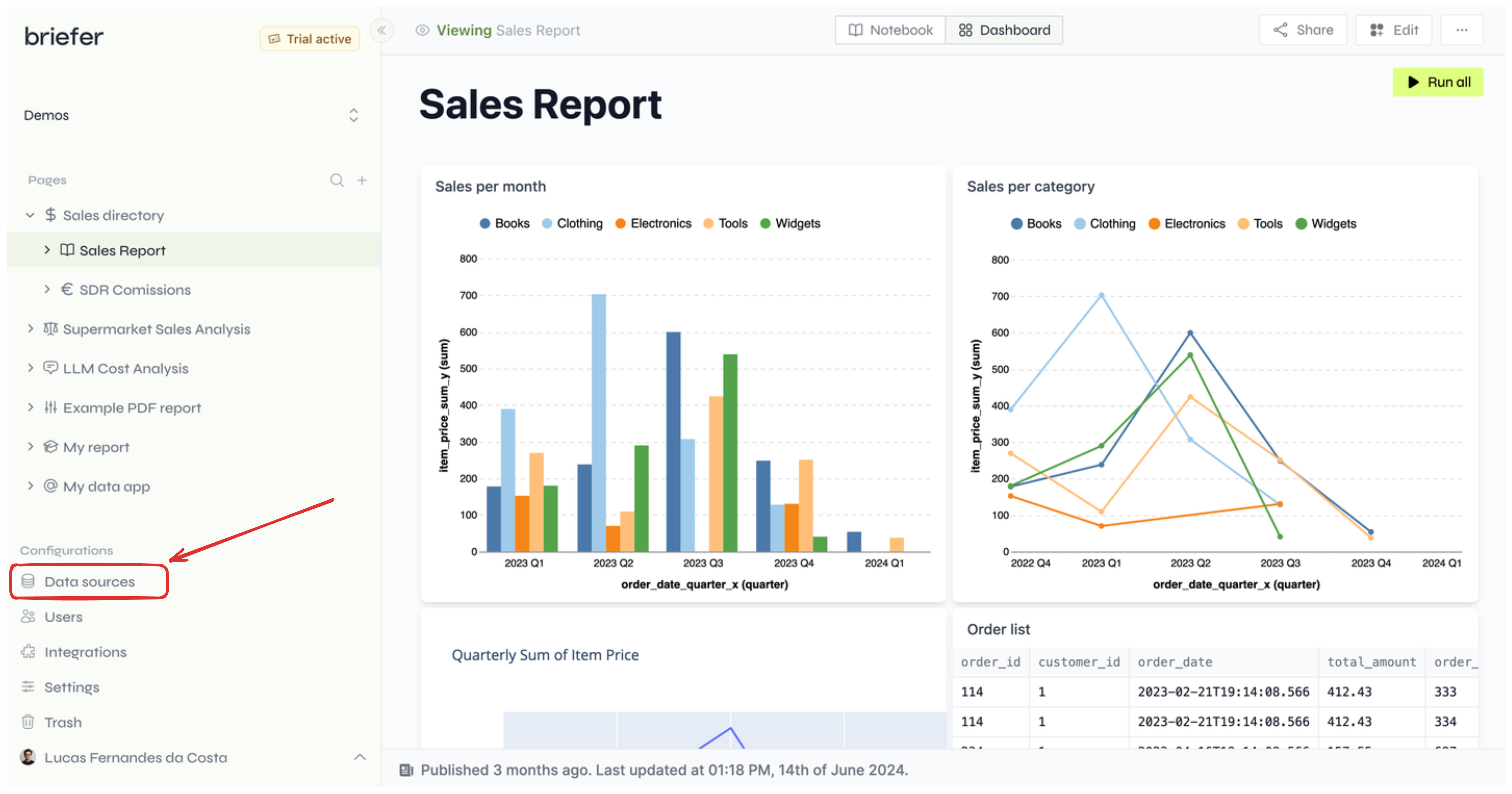- PostgreSQL
- BigQuery
- Redshift
- MySQL
- SQL Server
- Snowflake

You can access the "data sources" page using the button on the bottom left corner of the interface.
Using data sources in SQL blocks
In every SQL block, there’s a data source selector on the top right corner. You can use this selector to choose the data source you want to query. By default, the SQL block will use the first data source you connected to Briefer. If you want to change the data source, click on the selector and choose the one you want.Using data sources for writebacks
You can also use data sources in writeback blocks. Writeback blocks allow you to write data back to your database. When you add a writeback block, you’ll see a data source selector on the left side of the block. You can use this selector to choose the data source you want to write data to.We don’t yet support writebacks for all types of data sources. At the moment you can only write data back to Postgres and BigQuery instances. We’ll work to add writeback support for more data sources soon.
Troubleshooting data sources
Sometimes Briefer may fail to ping your data source, but it doesn’t necessarily mean there’s a problem with your connection. Therefore, please try to run a query in a SQL block to see if you can fetch data from your data source before starting to troubleshoot.
psql and make sure you can connect to it using the same credentials you provided to Briefer.
In case you’re still having trouble, double check whether your data source is behind a firewall and whether you need to add Briefer’s IP addresses to your firewall’s allowlist.
Finally, if you can’t connect to your data source using the native connector, you may want to try connecting to it manually using Python code.

